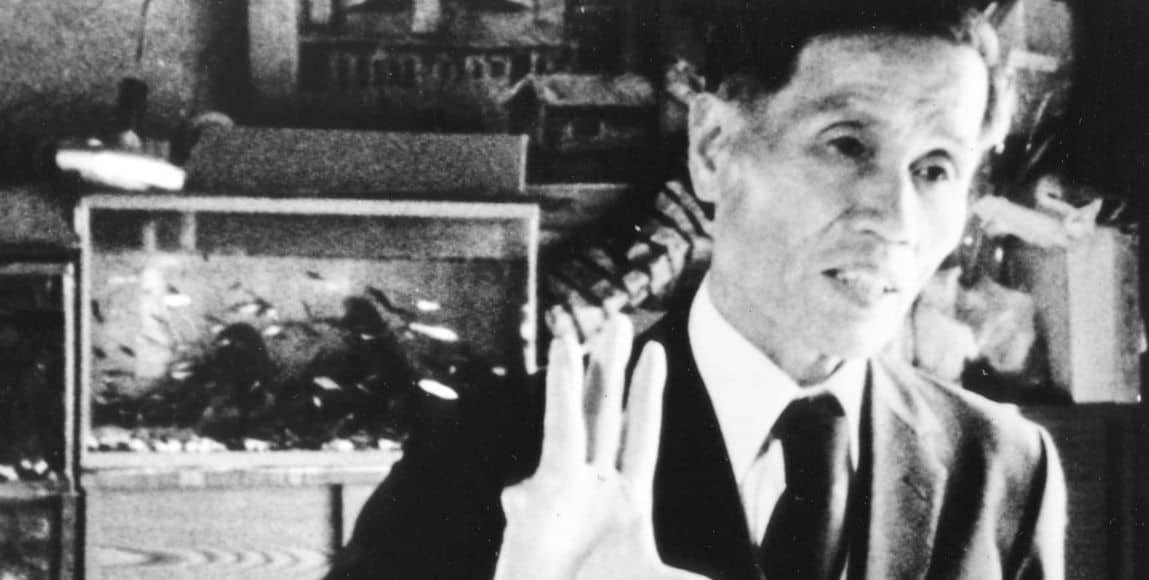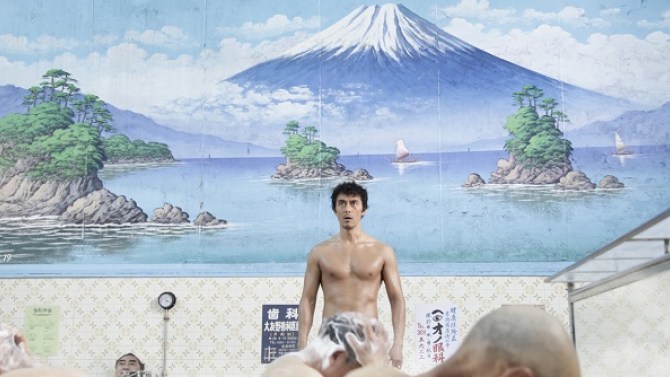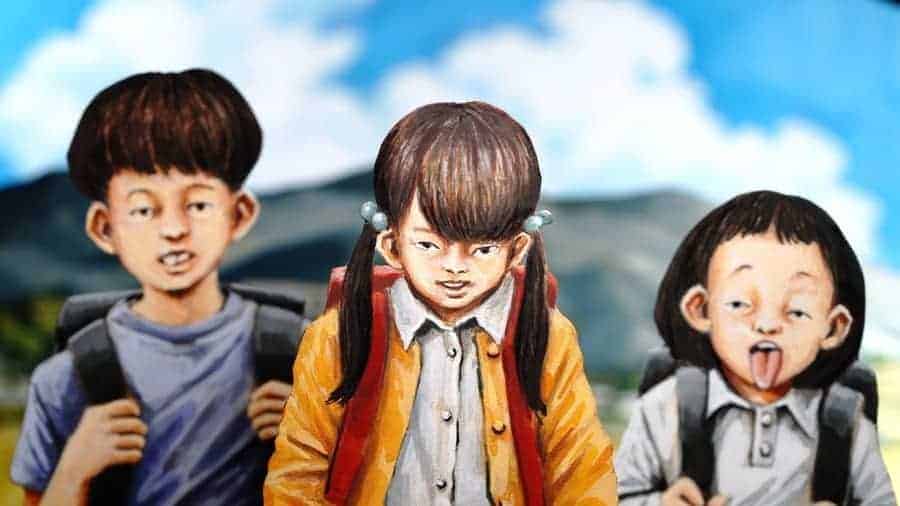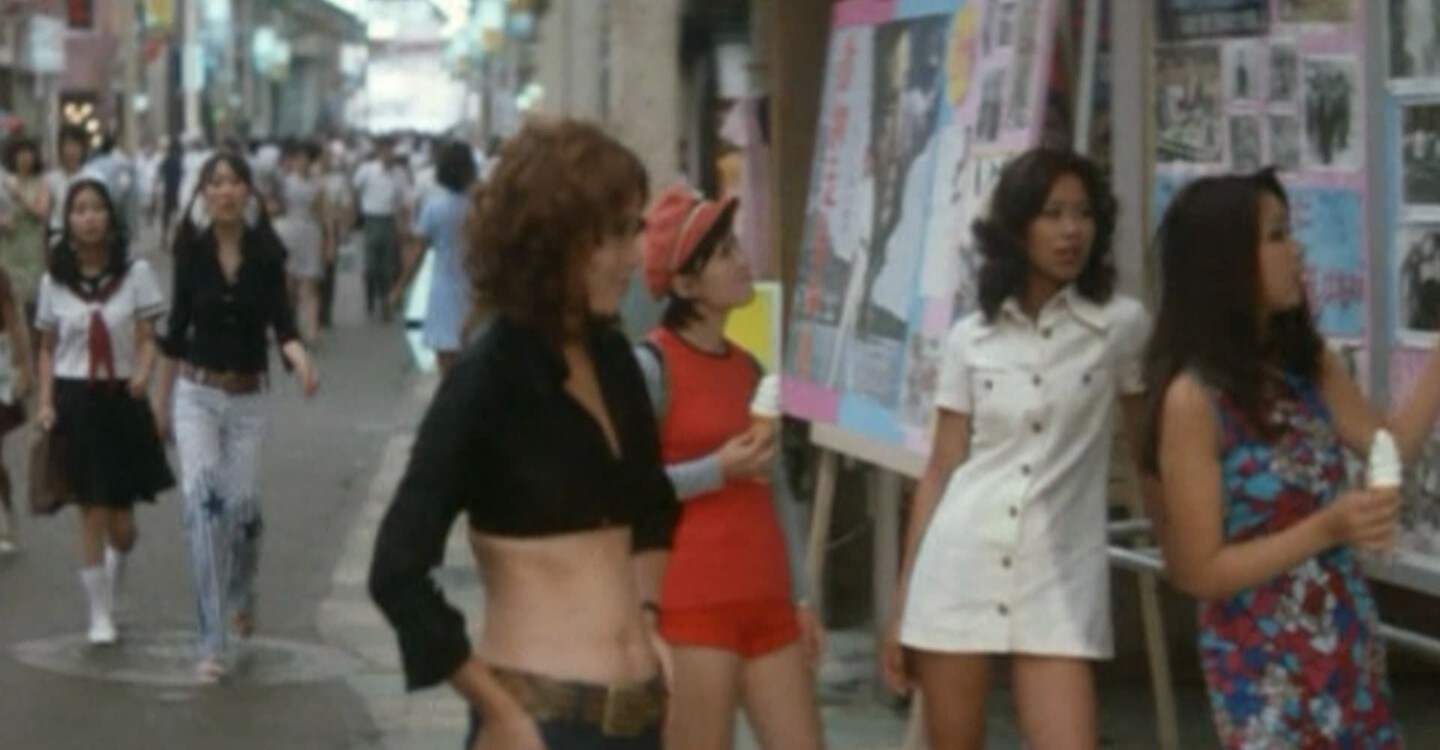31. The Emperor's Naked Army Marches On (Kazuo Hara, 1987, Japan)

The theme of post-war-trauma within “The Emperor's Naked Army Marches On” carries a double meaning. Indeed, Kazuo Hara covers this topic, but not quite through Okuzaki's “divine crusade” which he follows with his camera, but rather through the contradictions and violence of Kenzo, who, in a way, reflects best the kind of trauma of having seen such atrocities. The tall, lean man, dressed in a suit carries these experiences with him, but rather than staying silent, he aims for some kind of justice for what he and many others had to go through. As the camera observes even his most violent outburst, for example, when he attacks a handicapped man for giving an unsatisfactory answer, we begin to realize how the war may have ended, but certainly not for this man. (Rouven Linnarz)
32. The Mermaid (Steven Chow, 2016, China)

The plot is a fantasy concerning an unscrupulous businessman, played by Deng Chao, who uses sound waves to drive away dolphins from ocean front property, so that he can develop it. The sound waves have a devastating effect on a local mermaid population, so they plot to assassinate him. The plan involves sending Shan (Lin Yun), a beautiful young mermaid disguised as a human, to seduce and kill him. The first attempt fails miserably (and hilariously), so they then decide to have Shan lure him to their home, so that they can ambush him. A date is arranged and Liu Xuan, the businessman, is charmed by Shan's innocence and naivete. Shan finds out that Xuan's greed stems from an impoverished childhood and they fall in love. Shan sends him away from the ambush, but he is captured later on by the mermen and mermaids, who show him the effects that the sonic waves have on them. Xuan escapes with Shan's help, but the only person who believes him is his business partner, Roulan, who becomes jealous of Shan and seeks to destroy her and her people. (Randy McKenzie)
Buy This Title
on Amazon by clicking on the image below
33. The Sadness (Rob Jabbaz, 2021, Taiwan)

An unrepentant gore-fest filled with plenty of carnage and a topical story written around it all, “The Sadness” is an immensely fun zombie film that does have some minor issues filling out genre qualities that might not even matter anyway. Gorehounds, lovers of Asian horror cinema, or grindhouse film aficionados are going to really enjoy this one the most. (Don Anelli)
Buy This Title
on Amazon by clicking on the image below
34. Thermae Romae (Hideki Takeuchi, 2012, Japan)

Based on the homonymous and very successful manga by Mari Yamazaki, “Thermae Romae” is one of the most acclaimed titles on the list, receiving international recognition, becoming the second highest-grossing film in Japan in 2012, and netting the protagonist, Hiroshi Abe, a Japanese Academy Award for Best Actor. Japanese actors playing Romans that roam in modern day Japan was quite an unusual and illogical notion, but Hideki Takeuchi managed to depict it in an artful and entertaining fashion, while exemplifying the plumbing of contemporary Japan. (Panos Kotzathanasis)
35. Tokyo Gore Police (Yoshihiro Nishimura, 2008, Japan)

The script s unquestionably simplistic; however, it could not be additionally complex, since Nishimura's obvious purpose is to depict raw violence in all its forms. Accordingly, “Tokyo Gore Police” includes sadism, truncation, deformations, sick sex scenes and impressive battle scenes at the same time. Additionally, all the above are bathed in blood, as it is supposed to be with every splatter-exploitation movie. Still, what sets this particular movie apart is its technical soundness. The character design is inspired, the set design is meticulous, and the special effects are impressive in one of the finest depictions of a sick imagination.
36. Violence Voyager (Ujicha, 2018, Japan)

Much like Ujicha's previous projects, the weirdness of the film is a major hurdle to get over, particularly the fact that there are flat, stationary characters on-screen that don't really interact with each other at all, with splicing and overlapping pictures used to create movement that still looks patently fake. That the mouths don't move and there are very few scenes with actual movement by the characters, relying on the camera panning over the image instead to impart movement, creates such a distracting and disjointed concept that it can be off-putting for some to even attempt watching ‘Violence Voyager.' However, the good part is that it becomes less obvious as time goes on and becomes numbing in the manner of exposure to the style. Still, this is a facet of the movie that must be mentioned. (Don Anelli)
37. Visitor Q (Takashi Miike, 2001, Japan)

Miike incorporates in “Visitor Q” the aesthetics of a reality show, thus resulting in a film that resembles an experiment of what would happen if he were to direct a sitcom. He presents an inordinately problematic family, whose members still appear to function in an orderly fashion, where each one plays a role, without ever questioning the obvious pervasiveness of each other.
Buy This Title
on Amazon by clicking on the image below
38. Underwater Love (Shinji Imaoka, 2011, Japan)

While the rumors of “Underwater Love” being shot in one take are certainly untrue given the editing, especially in the musical scenes, there is no denying Imaoka's feature contains a distinct amateurish charm. From the musical performances to the dialogue delivery, the story and its characters have a certain oddness about them, which should not be surprising, given that it features a man in a kappa-costume, but it is quite interesting how the human characters seem to be most at odds with their world and themselves. For example, even with her frequent display of delight in the idea of a marriage, there is also a sense of trepidation, hesitation and even fear about the concept. As her boss shows her a catalog with their pictures glued to the pages while talking about their honeymoon and their wedding party, there is something not quite right, something manic about the man's dialogue, and a strange sensation in Asuka's face. (Rouven Linnarz)
Buy This Title
on Amazon by clicking on the image below
39. Wild Zero (Tetsuro Takeuchi, 1999, Japan)

In the end, “Wild Zero” is indeed a wild ride of a movie. Tetsuro Takeuchi combines punk-rock-attitude with elements of various different genres, reminiscent of the way music videos were shot in the 1980s and 1990s (a lost art indeed) and delivering a wonderfully chaotic, very entertaining feature. (Rouven Linnarz)
Buy This Title
on Amazon by clicking on the image below
40. Yakuza Apocalypse (Takashi Miike, 2015, Japan)

From the very start, we're plunged into a prototypical Miike milieu. Seeing the opening with the rival gangs at war is a perfect drop into this story, as the hand-to-hand and weapon-filled fighting is a brutal, dynamic sequence filled with great bloodshed during the battle. The focus on the relationships between the yakuza members, especially Kageyama's hazing over his skin condition that the other members went through, brings out a sentimentality to the gang that is usually featured in his work. Throwing in the oddball comedy from time-to-time, such as the meetings between bosses that are conducted while they're all knitting sweaters or meeting up with the Kappa-like member of the group which just speaks of his quirkiness and sense of humor. (Don Anelli)






















FYI, I think that Ghua Chang Fou is more commonly spelled Ghya Chang Fou.
Also, I’m not trying to be “that guy” but I recommend checking out Kanai Katsu and Shuji Terayama’s films if you’re into weird cinema. In fact, a lot of ATG’s output might be something you enjoy.
Sounds good, we will check